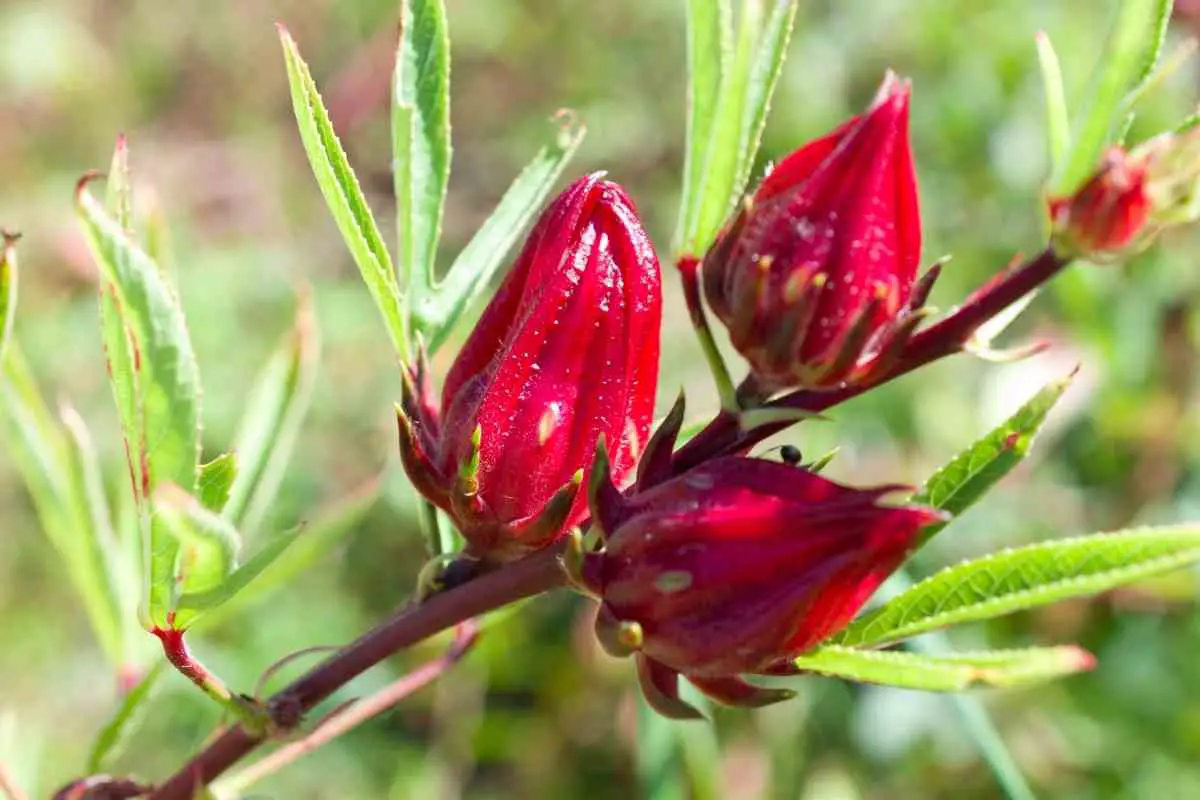Roselle hibiscus goes by a lot of names including Jamaican sorrel and Florida cranberry.
But whatever you call it, this is a beautiful plant that can add glorious color to your garden for the whole growing season!
If you’ve ever wondered how to grow a roselle plant then you’re in the right place.
Our guide contains everything you need to know to take your roselle from seed to mature plant with very few problems.
What Is Roselle?
Roselle goes by many names and is a plant that is native to tropical regions.
You might hear some people calling it Jamaican sorrel while others will refer to it as red sorrel or Florida cranberry. The scientific name for this plant is hibiscus sabdariffa.
The interesting thing about roselle is that, while it is a perennial, most people treat it and grow it as an annual.
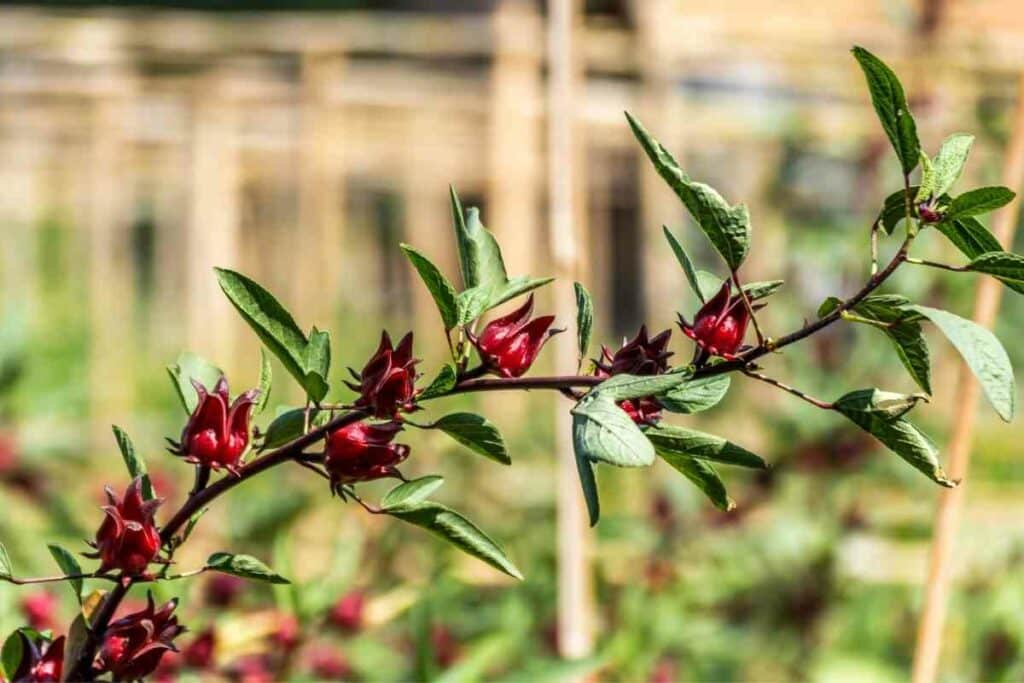
The plant produces beautiful blooms that last throughout the season as well as calyces that are bursting with flavor.
If you eat these calyces, you will notice that they don’t taste all that dissimilar to cranberry, which is likely where the plant earned its nickname.
These calyces are used in a variety of ways including to make jellies.
In fact, they’re often used as a substitute when making ‘cranberry’ sauce for holidays like Thanksgiving.
In Jamaica – Locals use the plant to make a special drink known as rosa de Jamaica and this is also common in places like Mexico. If you go to a Mexican restaurant in the US, then you will likely see this drink on the menu, listed as Jamaica.
Many parts of the roselle plant are edible including the leaves, flowers and pods.
The leaves have a similar flavor to spinach and are commonly used as a food source in many places around the globe.
They can be used to make teas and jams and are also used as a salad leaf; but you can cook them as well.
What’s very interesting is that the roselle plant also has a practical purpose. The stems of the plant are commonly used in place of jute for making burlaps.
When Is The Best Time To Plant Roselle?
Making sure that you plant your roselle at the right time is essential.
You will need the soil temperature to be between 75-85ºF in order for the seeds to germinate.
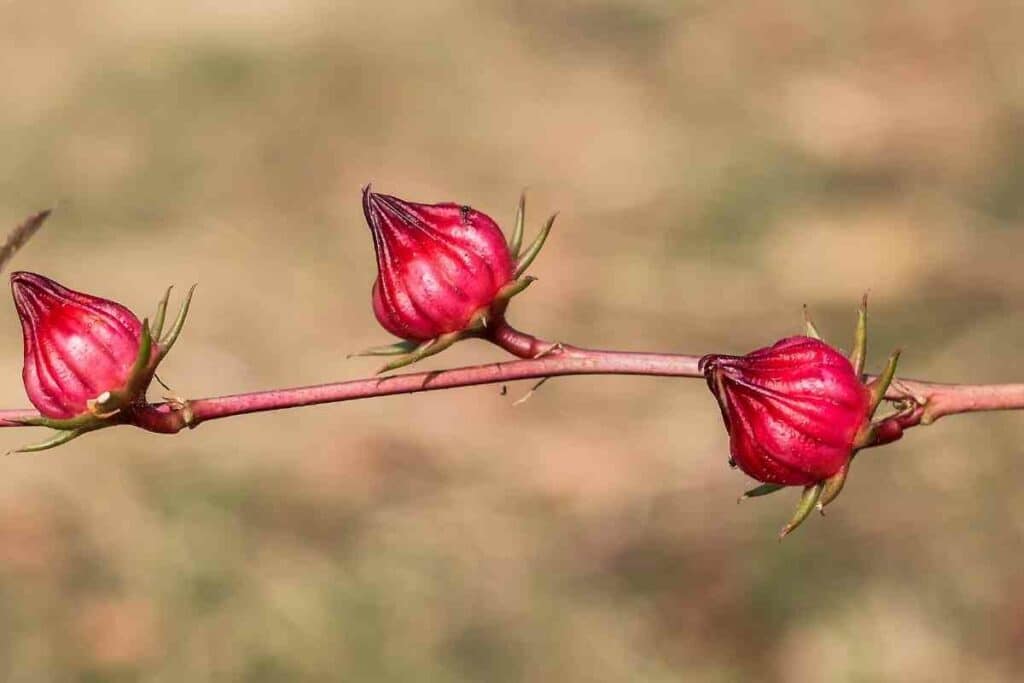
Set them at least half an inch deep and place two or three seeds in each hole, leaving around three feet of space between plantings.
You would typically plant the seeds around early spring. In desert regions such as Arizona, this would be around March when the temperature begins to rise.
However, if you live in a slightly cooler climate, it’s best to wait a little longer to make sure that the last frost has well and truly passed.
It’s also a very good idea to start your roselle plant indoors and you can do this even before the last frost, giving you a slightly more mature plant to put outside when the weather improves.
Finding The Right Spot For Roselle
There are a few things to consider when it comes to finding the right spot for your roselle plant.
If you want the plant to thrive, you need to think about its complex needs. In terms of how easy it is to grow, roselle requires a moderate amount of attention.

These plants can get extremely large, so, wherever you place it, there needs to be sufficient space for it to grow.
As We Mentioned – You will need to make sure that seeds are planted at least three feet apart, if not more. But the good news is that you’ll probably need no more than two plants for a decent-sized harvest.
You’ll also need to make sure that your roselle is properly supported.
Rebar steel is a great support and you’ll only need about 12 inches hammered into the ground for each plant.
The reason this is such a great option is that the branches can get very heavy when they are wet so need strong and stable support.
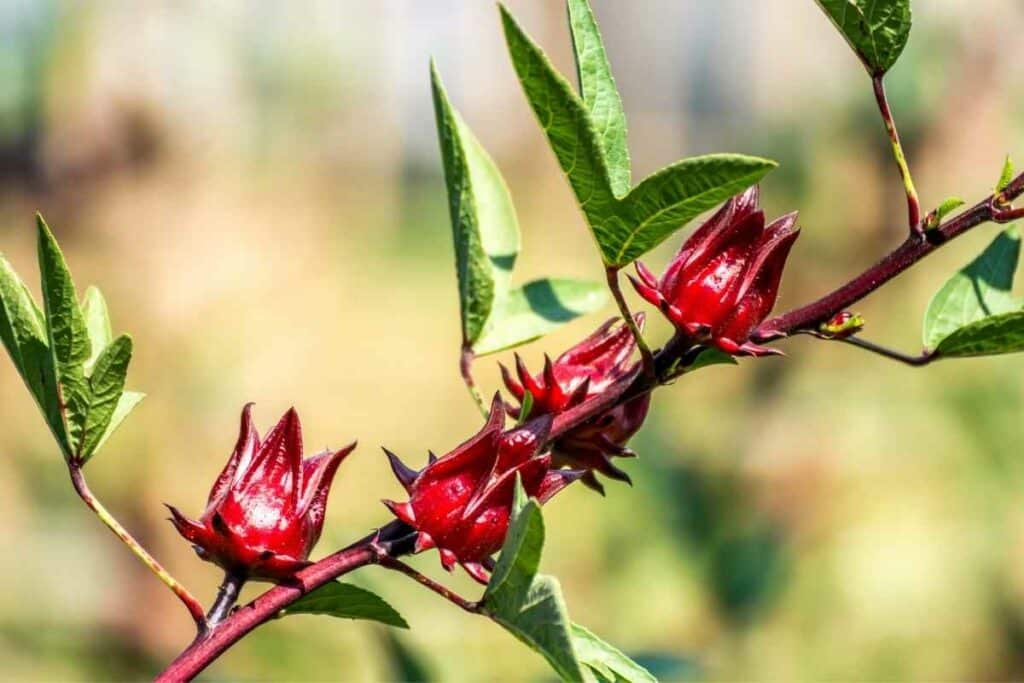
Find a spot in your garden where there is at least six hours of sunlight each day.
However, if you live in a very hot region then a few hours of shade in the afternoon might be preferable.
Anywhere else, roselle will not tolerate shade well. Also note that this plant does not tolerate freezing conditions and prefers a humid environment.
Take care to use the right soil for your roselle plants. It should be well draining and rich, but not too rich.
If it is then you will find that, while the plant gets incredibly large, the calyces aren’t as bountiful.
How Often Should You Water Roselle?
Roselle plants do very well in humid conditions; moisture is their friend.
For This Reason – You will need to make sure that the soil is evenly moist at all times, especially while the plant is maturing.
That said, it is quite possible to overwater roselle and when this happens, the plant will likely experience root rot.
To avoid this happening, make sure that you use a well draining soil.
Harvesting Roselle
Your hard work is about to pay off as it’s now time to harvest your beautiful roselle plant.
You will need to wait until the blooms have faded; they’ll typically wilt and then fall off entirely.

Following this, you’ll get the calyces but we would recommend waiting around seven days before you pick them.
You will know when they are ready as they’ll have a red calyx that is around an inch in width. The seed pod should be tender once it is fully grown.
However, you need to be careful when removing the calyx as you could do some unwanted damage to the branch. The best way to avoid this is to use some clippers.
If you want to get the most out of your roselle plant then it is important to make sure that you harvest it regularly and as early as possible. Doing this will ensure a good future yield.
Are There Any Problems With Growing Roselle?
One of the biggest issues with roselle is that it is day length sensitive.
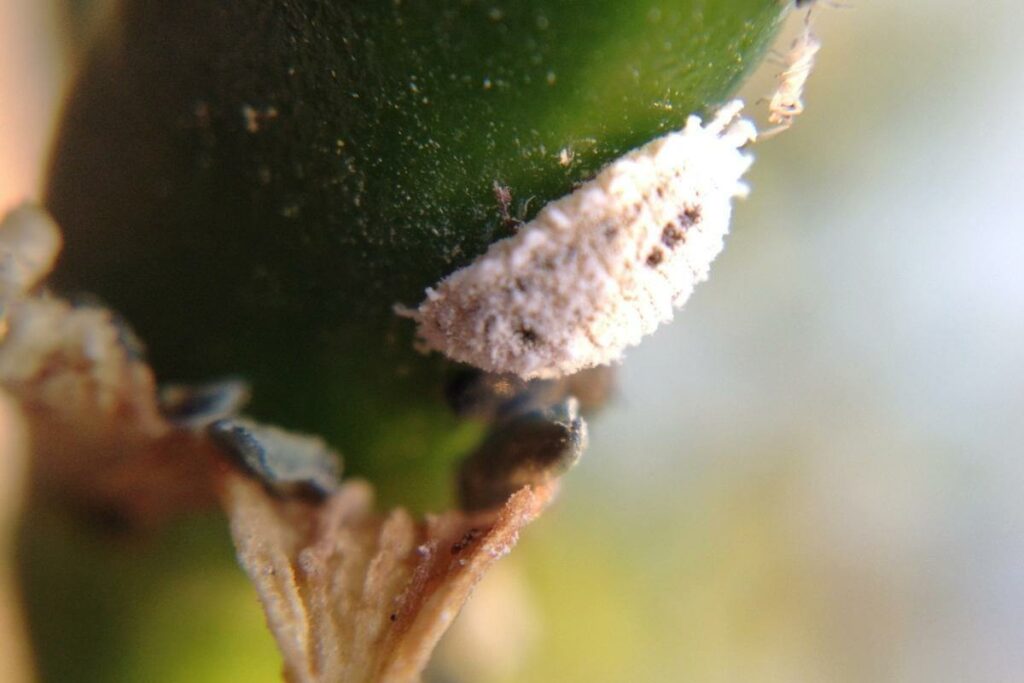
This might not be a phrase that you have heard before but it simply means that the plant will not bloom if the day is shorter than 13 hours.
Normally – This means that you won’t get any flowers until later on in the year but this depends on the variety. For example, the Thai red variety may flower in July.
This does mean that you need to give the plant plenty of time to mature, ready for those longer days.
Keeping to the guidelines we discussed earlier for when to plant will yield the best results.
However, it isn’t unheard of for a roselle plant planted in August to bloom although your harvest would not be as large.
As well as this, you have to consider that roselle is susceptible to quite a few pests.
These include things like:
- aphids
- flea beetles
- mealy bugs
- and nematodes
Heating the soil will usually get rid of nematodes and other pests can often be manually removed. While this does take time, it helps to ensure that everything is removed.
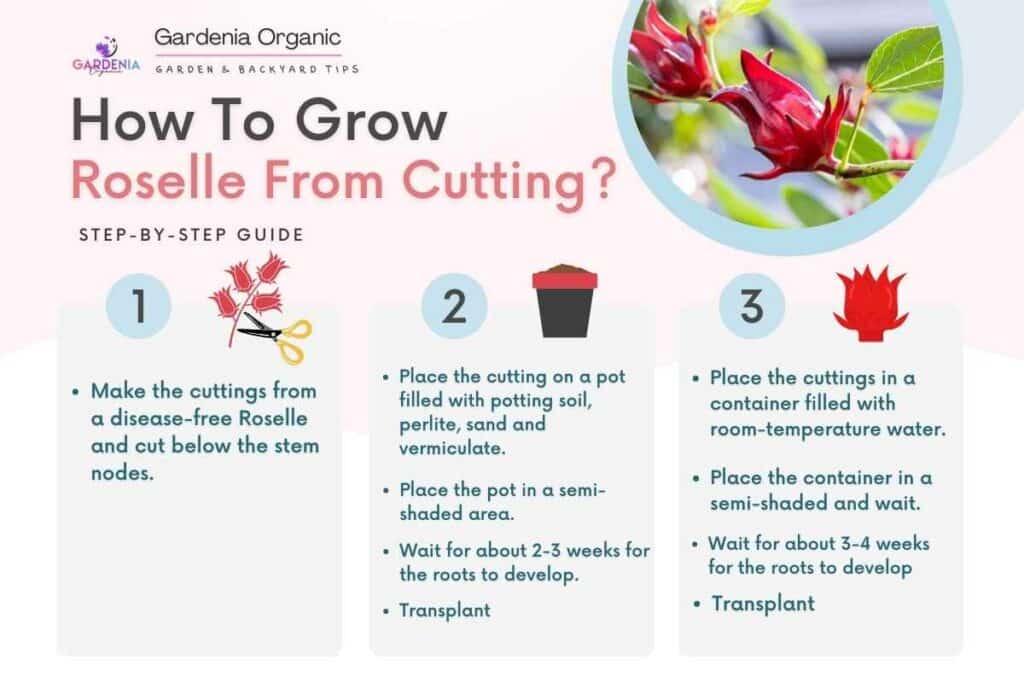
Where diseases are concerned, one of the main problems for roselle is root rot.
This is caused when the soil is too moist but, as we have mentioned, can be avoided by ensuring the soil is well drained.
That said, this plant may also suffer from bacterial root rot. In this case, you would need to remove the plant and trim away any rotten roots.
When replanting, use fresh soil and prune the plant well.
Conclusion
Roselle is one of the most beautiful tropical plants you can have in your garden.
What’s more, their edible calyces are great for making delicious cranberry flavored jams and jellies.
These plants are moderately difficult to take care of but when they get the TLC they require, they’ll grow large with plentiful harvests.
